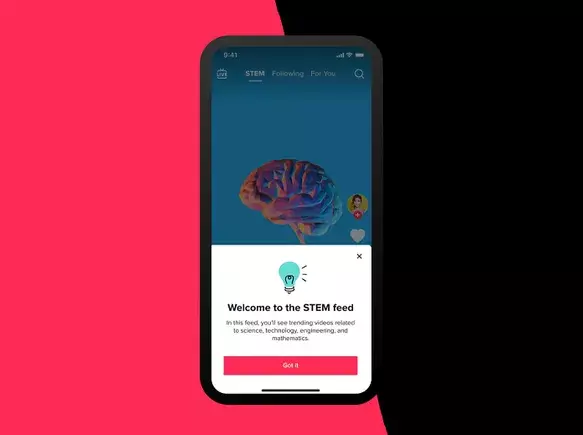In a significant move to enhance its role in educational content, TikTok has announced that it will expand access to its STEM feed to all users across the U.S., U.K., and Ireland. Originally launched in March 2022 for U.S. users aged 18 and under, the feed has seen remarkable growth and engagement, particularly among younger demographics. As of now, all users in these regions can dive into a stream dedicated to science, technology, engineering, and mathematics—a strategic decision that underscores TikTok’s commitment to nurturing educational growth.
This shift marks a pivotal moment for the platform. By opening the STEM feed to a broader audience, TikTok aims to attract a diverse range of users, including curious learners and professionals, in addition to the younger audience that has traditionally populated its educational spaces. The platform envisions fostering a unique environment where users can not only consume information but also interact and collaborate on scientific queries and challenges. TikTok’s claim that the feed serves as “a space for co-learning, inspiration, and enrichment” reflects a deliberate effort to create a community around STEM subjects.
The impact of this initiative can be seen in the numbers: nearly 200 million views of STEM-related content have been recorded since the feed’s inception. Furthermore, surveys indicate that approximately a third of teens in the U.S. and U.K. engage with STEM content weekly. These figures suggest that TikTok’s educational efforts are resonating with its audience. By fostering greater interest in science-related video content, TikTok can cultivate not only engagement but also critical thinking among its users.
Particularly noteworthy is TikTok’s strategy to introduce local language support for STEM content. This approach aims to ensure that educational materials are accessible to an even wider range of users, breaking down language barriers that may hinder participation. Such a move could significantly enhance user interaction and stimulate interest across diverse communities, thereby amplifying the platform’s educational outreach.
Despite these positive developments, TikTok faces ongoing scrutiny from regulators and critics who question its overall value. Concerns persist regarding the potential for the platform to consume excessive user time and influence behavior adversely. Nevertheless, by bolstering its educational content, TikTok has an opportunity to mitigate some of these criticisms. While it may not solve all the challenges associated with perceptions of the platform as a mere entertainment medium, promoting educational content such as STEM can serve as a powerful counter-narrative.
TikTok’s expansion of its STEM feed possesses the potential to foster a new wave of interest in scientific disciplines. By creating pathways for learning and collaboration, TikTok not only enriches its content offerings but also positions itself as a valuable resource for users seeking educational enrichment. As the platform continues to evolve, it will be essential to monitor the reception and impact of these initiatives, ensuring they contribute positively to user experiences and learning outcomes.

